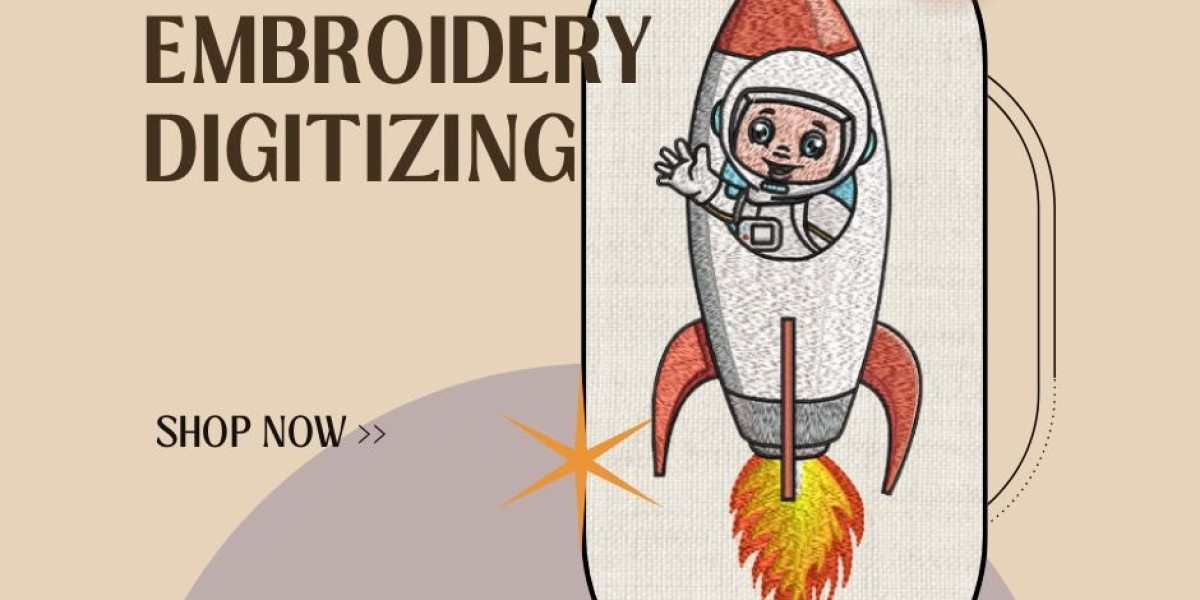In the modern creative industry, embroidery has progressed well beyond traditional hand stitching. With technological advancements, embroidery digitizing services have become an essential component of apparel, fashion, and promotional production. From designers and small business owners to large manufacturers, digitizing offers precision, efficiency, and consistent quality in every stitch.
Understanding Embroidery Digitizing
Embroidery digitizing is the process of converting a design, such as a logo, artwork, or text, into a digital embroidery file readable by embroidery machines. These files, often in formats like DST, PES, or EXP, provide precise stitching instructions, including the type of stitches, their direction, and color sequences.
Unlike simple graphic editing, embroidery digitizing requires both technical expertise and a deep understanding of how threads and fabrics interact. Skilled digitizers ensure that every stitch is strategically placed, resulting in designs that are professional, durable, and visually accurate.
Why Quality Digitizing Is Essential
A properly digitized file ensures that embroidery machines can reproduce the design accurately without thread breaks, misalignments, or texture issues. Consistency and efficiency are key benefits, but professional digitizing goes further it enhancing the final appearance and longevity of embroidered products.
Key advantages of professional embroidery digitizing include:
- Consistency: Each stitch is programmed for precision, ensuring repeatable results across multiple items.
- Efficiency: Once digitized, designs can be quickly loaded onto machines, reducing manual setup and production time.
- Adaptability: Digitized files can be applied to different materials such as cotton, denim, fleece, or polyester with minor adjustments.
- Professional Results: Balanced density and accurate stitch placement create a clean, high-quality finish.
- Scalable Use: A single design can be resized for various applications without losing clarity or shape.
The Embroidery Digitizing Process
Professional digitizing involves several steps that combine artistic judgment with technical accuracy. Each stage plays a crucial role in determining how the final embroidery will look and perform.
- Design Preparation: The original artwork is refined to remove unnecessary details that may not translate well in thread.
- Stitch Selection: The digitizer chooses the best stitch types (satin, fill, or running stitches) based on design complexity and fabric type.
- Stitch Direction and Density: Adjustments are made to ensure smooth thread flow and minimize puckering or thread breaks.
- Color Mapping: Thread colors are assigned carefully to match the artwork, considering contrast and fabric color.
- Test Stitching: Before full production, a sample run verifies accuracy, alignment, and texture. Corrections are made if needed for optimal results.
This detailed process ensures that each embroidery design is ready for efficient and flawless production.
Benefits of Professional Embroidery Digitizing Services
Outsourcing digitizing to professionals can greatly improve production workflow and finished quality. Trained experts understand both the technical and creative requirements for accurate embroidery.
Key benefits include:
- Expert Knowledge: Experienced digitizers understand how different fabrics react under tension and how to adjust stitch density accordingly.
- Customization: Designs can be tailored for specific purposes—whether for small caps, large back pieces, or textured materials.
- Reduced Errors: Proper digitizing prevents costly mistakes such as thread breaks or distorted designs.
- Access to Professional Tools: Services use advanced software like Wilcom or Tajima Pulse, ensuring precision and flexibility.
- Scalable Production: Whether for one-off projects or large production runs, professional digitizing supports consistent quality at any scale.
Applications of Embroidery Digitizing
Digitized embroidery is used across multiple industries and product categories. It enhances both personal and commercial designs through precision stitching. Common uses include:
- Corporate logos for uniforms, hats, and promotional products
- Fashion and casual apparel, such as shirts, jackets, and accessories
- Sportswear with team names, numbers, and emblems
- Home décor items like personalized towels, cushions, and linens
- Custom gifts and event merchandise
This versatility makes digitizing an integral part of modern embroidery production.
Tips for High-Quality Embroidery Results
To achieve the best outcome, attention to detail during the design and production process is essential.
- Submit high-resolution artwork for accurate conversion.
- Select appropriate fabrics and threads that suit your design’s density and texture.
- Communicate specific design preferences such as stitch type, size, and color before production.
- Review sample stitches before mass production to identify any needed adjustments.
- Keep digital backups of your embroidery files for future use and modifications.
Conclusion
Embroidery digitizing combines technology and craftsmanship to transform creative ideas into precise embroidered designs. By working with a professional embroidery digitizing service, you gain reliable quality, production efficiency, and long-term usability of your designs.
As embroidery continues to evolve with digital innovation, digitizing remains the foundation for achieving consistent, durable, and visually refined embroidered products. Every stitch becomes a reflection of careful planning, technical expertise, and skilled artistry, turning your design concepts into stitched perfection.


![Call of Duty: Legend of War — мобильная версия [Обзор]](https://biiut.com/upload/photos/2025/10/9huRwxshMUkliXQj8rmF_29_58128b1dbbe889a02b7eaf16a533450e_image.png)
